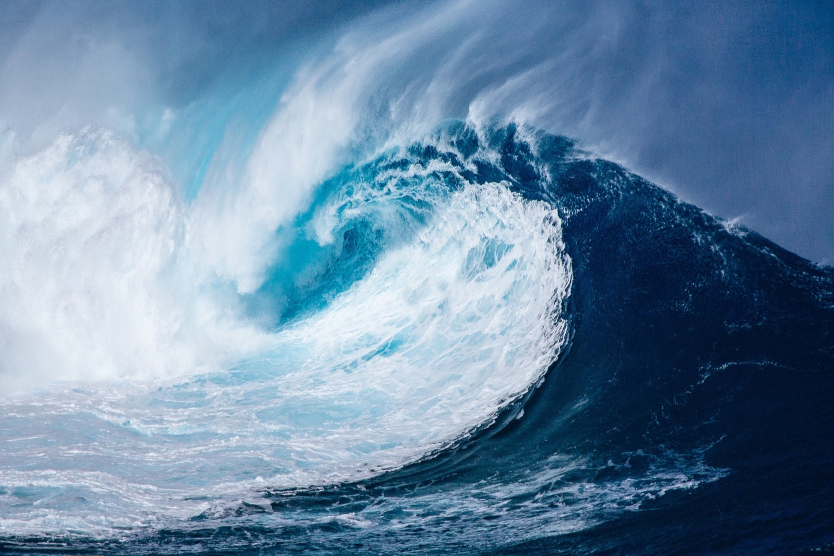
The project "OsT" seeks to harvest the enormous energy of waves.
© Pixabay
In addition to wind and solar power, the tidal current of the ocean is also an inexhaustible source of energy. Although ocean currents are a source of constant energy that is independent of the weather, they have so far only been used to a limited extent compared to onshore forms of energy generation. The calculable and continuous alternation of the tides creates currents that drive a turbine according to the same principle as wind turbines, producing electricity in the process. However, due to the greater density of water, water flow with the same velocity can achieve a 1.000 times higher output than air flow. In order to be able to make efficient use of the resulting energy, researchers have developed free-floating turbines that are attached to a floating structure.
By optimising the existing turbine concept, the collaborative project OsT aims to increase energy generation and reduce investment and operating costs. This is expected to contribute to the development of a prototype that will be used in island grids in future. The project envisages combining the platform concept (PLAT-I) with the SIT turbine concept to form a complete system, which will be tested in field trials after its successful implementation.
In addition, the plant is to be distinguished by the highest possible economic efficiency. The Institute for Fluid Mechanics and Hydraulic Fluid Machines (IHS) at the University of Stuttgart is testing the interactions between turbines and the platform to enable the best possible integration of the turbine technology (developed by SCHOTTEL Hydro GmbH) into the floating platform.
The project, launched in April 2019, is being funded by the Federal Ministry for Economic Affairs and Energy (BMWi) for a period of three years.


